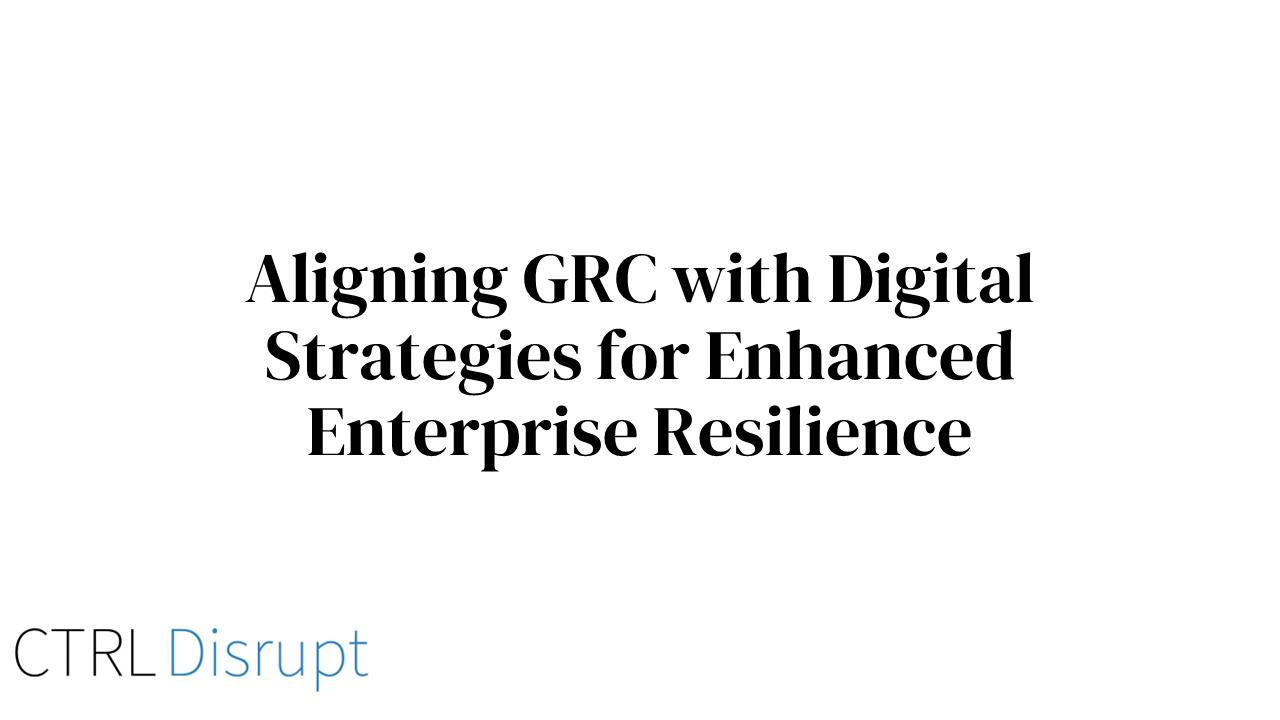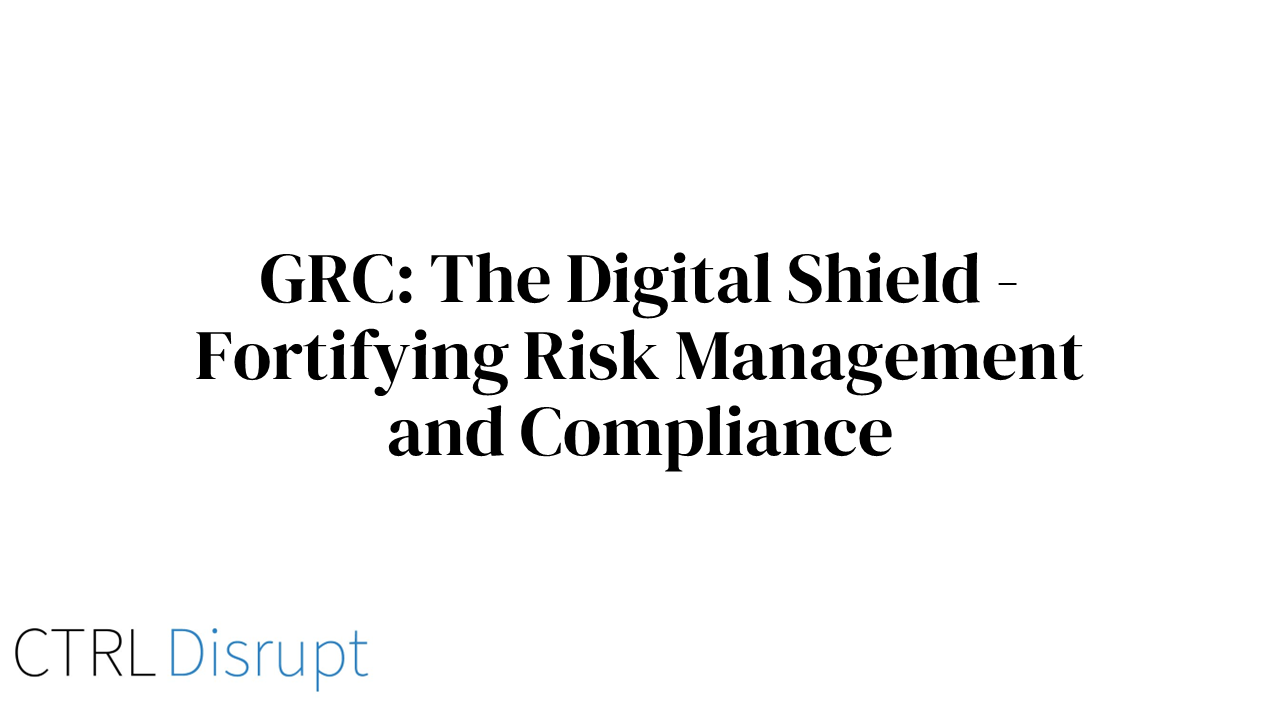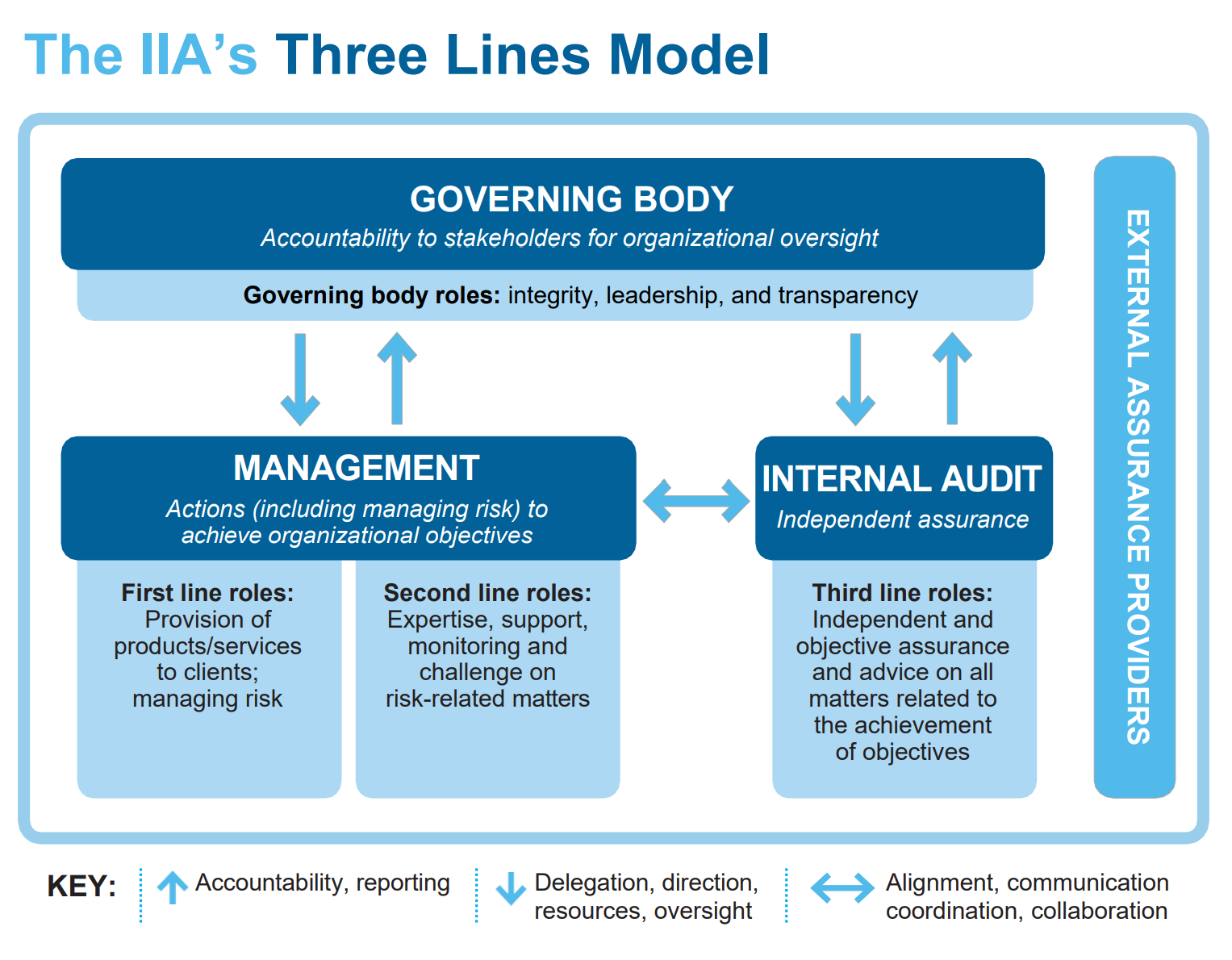Enterprise Architecture: More than Just IT’s Playbook
In the dynamic realm of business operations and IT integration, Enterprise Architecture (EA) often finds itself pigeonholed, misunderstood as a mere component of IT strategy. However, as businesses scale and complexities arise, understanding the expansive scope of EA is crucial. This article aims to debunk misconceptions and shed light on EA's overarching role in harmonizing business strategy with technological advancements.
What is Enterprise Architecture?
Enterprise Architecture, at its core, is the master blueprint that encapsulates the strategy, processes, information, and technology of an organization, ensuring that they align with the business's goals and vision. While it may have its roots in the IT realm, EA has evolved over the decades, taking on a more holistic approach.
Today's EA doesn’t just focus on technology but encompasses four primary domains:
-
Business Architecture: This outlines the organizational strategy, governance structures, and primary processes, ensuring they are interwoven effectively.
- Example: A global retailer wanting to ensure that its in-store sales processes align with its e-commerce strategy would rely on business architecture to create a seamless customer experience across all touchpoints.
-
Data Architecture: In an age of information, understanding how data is collected, stored, accessed, and utilized can make or break an organization. This component ensures that data flows optimally and is used effectively.
- Example: A healthcare provider aiming to integrate patient records from various departments would use data architecture principles to ensure data integrity, security, and accessibility.
-
Application Architecture: This isn't just about which software to use; it's about designing and integrating applications in a manner that they serve the organization's needs seamlessly.
- Example: An online banking system requires multiple applications (for account management, loan processing, customer service) to interact flawlessly. Application architecture ensures these systems are integrated efficiently and are scalable.
-
Technology Architecture: Though this is what people often associate EA with, it's just one piece of the puzzle. It's about determining the hardware, software, and network infrastructure that will drive all other domains.
- Example: A cloud service provider would rely on technology architecture to determine server capacities, network redundancies, and security protocols to ensure reliable and uninterrupted service to its clients.
Each domain of EA, while powerful on its own, gains heightened significance when viewed as a part of the whole. Together, they form a cohesive strategy that not only addresses an organization's immediate needs but also positions it for future challenges and opportunities.
The Common Misconception: EA as Just an IT Strategy
Historically, many have viewed Enterprise Architecture as an extension of the IT department – a strategy for integrating systems or deploying software. This perspective, while not entirely incorrect, is narrow and fails to capture EA’s comprehensive role.
When we relegate EA to the silos of IT strategy, we risk missing out on its potential to offer solutions to broader business challenges. The value of EA isn't just in aligning IT systems; it's in aligning IT capabilities with overarching business strategies, ensuring that every technological investment or initiative directly resonates with the company's mission, vision, and operational objectives.
Diving Deeper into the Misconception
-
Historical Context: In its early years, EA primarily emerged as a tool to handle the increasing complexities of IT environments. This focus on IT systems has inadvertently contributed to the confined perception of EA.
-
The Evolving Role of IT: With technology becoming more ingrained in every aspect of business, the line between IT strategy and business strategy has blurred. Hence, limiting EA to IT is an outdated viewpoint. Instead, the modern EA seeks to bridge the once-distinct divide.
-
Overemphasis on Tools and Systems: Another contributor to the misconception is the often overwhelming emphasis on EA tools and software. While these are essential components, they're tools of the trade rather than the essence of EA. At its heart, EA is about strategy, alignment, and adaptability.
-
Need for Broader Advocacy: Enterprise Architects themselves can sometimes inadvertently perpetuate this misconception if they don't actively communicate and demonstrate EA's broader organizational benefits. Hence, there's an imperative need for architects to be advocates, educators, and strategists, emphasizing the holistic value of EA.
Addressing these misconceptions is more than a matter of semantics. A limited understanding of EA can lead to underutilization, with organizations missing out on leveraging its full suite of benefits. As we move towards an increasingly digital future, it's paramount for businesses to grasp the expansive, strategic potential of Enterprise Architecture.
Beyond IT: The Comprehensive Reach of EA
At a cursory glance, one might perceive Enterprise Architecture primarily as a tech-centric discipline, but its true essence is rooted in fostering harmony between technology and business goals. This synchronization offers invaluable advantages that echo through every facet of an organization.
-
Business Strategy Alignment: EA ensures the alignment of business and IT strategies, ensuring that every technological initiative underpins and propels the overarching business objectives.
- Example: When a financial firm aims to penetrate a new market segment, EA ensures that the IT infrastructure, applications, and data strategies align to support this expansion, from understanding client needs to ensuring compliance with local regulations.
-
Operational Efficiency: By providing a clear blueprint of processes, systems, and strategies, EA plays a pivotal role in streamlining operations, reducing redundancies, and optimizing resource allocation.
- Example: A manufacturing company might employ EA principles to integrate its supply chain processes, ensuring real-time inventory tracking, efficient order processing, and timely deliveries.
-
Facilitating Innovation: EA isn’t just about maintaining the status quo; it’s a catalyst for innovation. By understanding the current architectural landscape, organizations can identify gaps and opportunities, fostering a culture of continuous improvement and innovation.
- Example: A media streaming company, through EA, might recognize the potential of integrating augmented reality (AR) experiences for users, creating a novel viewing experience and setting itself apart from competitors.
-
Risk Management: Beyond its strategic role, EA offers a panoramic view of the organization, enabling leaders to identify potential risks, from technological vulnerabilities to misaligned business strategies, and devise mitigation plans.
- Example: In the realm of banking, EA can help in identifying potential security loopholes in digital transaction systems, ensuring that protective measures are integrated long before threats materialize.
In essence, while the technological component of Enterprise Architecture is undeniable, its true power lies in its ability to weave together the myriad threads of an organization into a cohesive, agile, and resilient tapestry, ready to adapt and thrive in a perpetually evolving business landscape.
The Key Components of Enterprise Architecture
The essence of Enterprise Architecture (EA) lies not just in its strategic vision but in its actionable components that bring this vision to life. While the domains of EA provide the overarching structure, the specific components within these domains give substance to the strategy.
-
Standards: These are established norms or criteria within an organization that guide the selection, creation, and implementation of IT solutions. By adhering to these standards, enterprises ensure consistency, interoperability, and a reduced complexity in their IT environment.
- Example: An organization might adopt ISO standards for data security or industry-specific standards for software interoperability.
-
Principles: Guiding tenets or beliefs that drive decision-making within EA. They shape how architecture is developed, maintained, and leveraged.
- Example: A principle like "Data Privacy First" would guide decisions around data storage, processing, and transmission, ensuring customer data is always protected.
-
Models: Visual or conceptual representations that illustrate how different architectural components interact. These models can range from high-level overviews to detailed system interactions.
- Example: A data flow diagram (DFD) could illustrate how customer data traverses through different systems, from initial collection at a web interface to final storage in a database.
-
Best Practices: Established procedures or methodologies that are recognized as optimal and are recommended for adoption across the organization.
- Example: A company might adopt Agile methodologies as a best practice for software development, ensuring iterative development and continuous feedback.
-
Patterns: Reusable architectural solutions that address recurring problems. Patterns provide a proven template for solving specific architectural challenges.
- Example: A "Singleton Pattern" in software design ensures that a class has only one instance, providing a global point of access to that instance.
-
Policies and Guidelines: These are the rules and directions that help in the interpretation and execution of the architecture. While policies are often mandatory, guidelines offer recommended directions.
- Example: A policy might dictate that all software development must undergo a security audit before deployment, while a guideline might suggest best practices for conducting such an audit.
-
Roadmaps: Strategic plans that outline the evolution of architectural components over time. They help organizations understand where they are, where they need to go, and how they'll get there.
- Example: An IT roadmap might outline the transition from on-premises servers to a hybrid cloud environment over a 5-year span.
These components, while diverse in nature, converge to provide a structured, strategic, and actionable path for organizations. They serve as the bricks and mortar, building upon the foundational concepts of EA, ensuring that visions are transformed into tangible results.
EA's Role in Today's Dynamic Business Environment
In today's fast-paced, technology-driven world, businesses are undergoing rapid transformation. Whether it's the adoption of new technologies, the evolving expectations of customers, or the emergence of disruptive business models, the landscape is continually shifting. In such an environment, Enterprise Architecture has emerged as a lighthouse, guiding organizations through turbulent waters. Here's how:
-
Adapting to Technological Change: The influx of new technologies, from artificial intelligence to blockchain, can be overwhelming. EA provides a structured approach to assess, adopt, and integrate these technologies in alignment with business goals.
- Example: A financial institution might leverage EA to assess the feasibility and benefits of incorporating blockchain into its transactional systems.
-
Ensuring Business-IT Alignment: With businesses increasingly relying on IT to deliver value, ensuring that IT initiatives resonate with business strategies is crucial. EA offers the framework to ensure this alignment, bridging the gap between strategy and execution.
- Example: A retail enterprise can use EA to ensure that its e-commerce platform development aligns perfectly with its strategy to capture the online market.
-
Facilitating Innovation: Innovation isn't just about new ideas; it's about implementing them effectively. Through EA, organizations can create an environment that fosters innovation while ensuring it's grounded in feasibility and value delivery.
- Example: A healthcare provider might utilize EA principles to innovate patient care models, ensuring they are supported by the right technology and processes.
-
Enhancing Agility: The ability to pivot in response to market changes is invaluable. EA provides the structural flexibility that allows organizations to make quick adjustments without compromising system integrity or strategic focus.
- Example: In the face of a global pandemic, companies with robust EA were better positioned to transition to remote work models, ensuring business continuity.
-
Risk Management: With the increasing complexity of business ecosystems, risks have become multifaceted. EA offers a holistic view, helping organizations identify, assess, and mitigate potential threats.
- Example: Through its EA framework, a manufacturing company might identify dependencies and vulnerabilities in its supply chain, allowing for proactive risk mitigation.
-
Driving Digital Transformation: As businesses move towards digital models, EA acts as the blueprint for this transformation, ensuring that digital strategies are well-planned, implemented, and aligned with the broader business vision.
- Example: A traditional publishing house might leverage EA to transition into a digital-first model, ensuring a seamless blend of content creation, distribution, and monetization strategies.
-
Promoting Cross-Functional Collaboration: In modern businesses, silos can be detrimental. EA acts as a common language, fostering collaboration across departments. By mapping interdependencies, teams can better understand how their functions interrelate, paving the way for more cohesive decision-making.
- Example: With an EA framework, a product development team might closely work with the marketing department to ensure that product features align with market demands and promotional strategies.
In essence, in the dynamic landscape of modern business, Enterprise Architecture doesn't just play a supportive role – it's foundational. It equips organizations with the tools, strategies, and frameworks to navigate change confidently, ensuring that amidst the flux, the strategic vision remains clear and actionable.
Enterprise Architecture and Business Process Optimization
The synergy between Enterprise Architecture (EA) and Business Process Management (BPM) is profound. While EA offers a holistic view of the organization's assets and their interrelationships, BPM focuses on the workflows and procedures that drive business outcomes. When aligned, these two disciplines can drastically elevate operational efficiency and strategic agility. Here's how:
Foundational Understanding: EA lays out the organizational blueprint, detailing systems, technologies, and interdependencies. This foundational understanding is crucial for BPM, which seeks to streamline processes across these very systems and technologies.
- Actionable Insight: Before delving into BPM, ensure a thorough review of the organization's EA to identify existing assets, systems, and potential bottlenecks.
Alignment with Business Goals: Both EA and BPM are geared towards ensuring that the technical and operational facets of an organization align with its strategic objectives. By integrating EA's strategic viewpoint with BPM's operational focus, businesses can ensure that processes are not only efficient but also purpose-driven.
- Actionable Insight: Regularly review and align process optimization projects with the overarching enterprise architectural vision.
Seamless Integration: Process optimization often requires integrating multiple systems and technologies. With a robust EA in place, this integration becomes more structured, ensuring data consistency, operational efficiency, and reduced redundancy.
- Actionable Insight: Leverage the EA framework when designing integrations for BPM projects to minimize technical debt and complexity.
Continuous Improvement: One of the core tenets of BPM is the cycle of continuous improvement. With EA providing the roadmap, organizations can iterate their processes with a clear understanding of systemic impacts and dependencies.
- Actionable Insight: Adopt a feedback-driven approach. After implementing any process change, loop back to the EA to assess its broader impacts and identify further areas of improvement.
Enhanced Agility: In today's dynamic business environment, agility is paramount. An aligned EA and BPM approach ensures that process changes can be rapidly implemented without disrupting the existing architectural framework.
- Actionable Insight: Encourage close collaboration between EA and BPM teams. Shared tools, documentation, and communication channels can significantly enhance responsiveness.
Ultimately, Enterprise Architecture (EA) serves as the foundational blueprint for an organization, providing the structure and framework, while Business Process Management (BPM) fine-tunes the flow of activities within that structure. The fusion of these disciplines guarantees that businesses can operate at their highest level of efficiency, all while maintaining the agility and adaptability needed to thrive in an ever-changing landscape.

 By
By


